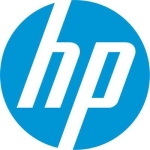What is our primary use case?
In an enterprise setting, I use the product to protect workstations, and more recently servers, from all sorts of threats, including malware, viruses, trojans, etc.
How has it helped my organization?
Defender for Endpoint gives us greater visibility. Cybersecurity professionals always need that because what we don't see can get us into a lot of trouble. We also need visibility to be easily applied across platforms and with an improving ability to gather information from Linux or Mac-based end platforms. AWS and Google Cloud give better visibility, which we need from a security standpoint.
The other Microsoft security products we use are Defender for Cloud Apps, Defender for IoT, and Defender for Cloud.
The integration is pretty straightforward. It depends on a company's licensing and deployment team, and Microsoft makes it simple to integrate multiple solutions. It is easy to integrate into a test environment, though it depends on the infrastructure and networking team because they have to carry it out. Each company has different solutions; whether they are entirely cloud-based, on-prem, or hybrid, there's a lot of flexibility. Depending on the package, Microsoft is usually very helpful and available to assist with implementation and integration.
Coordinated detection and response between the solutions are essential. Depending on the company and its capabilities, it can sometimes be challenging to bring different tool sets to bear. For example, integrating endpoint protection, XDR, theme tools, CASB apps, and security from different companies can be very tricky. What Microsoft is doing in terms of easy integration makes their product an easy sell because it's critical to spend time doing the work of security rather than worrying about and dealing with integration.
Threat protection is extensive; it covers most of the concerns we face as a company. I have limited experience with the IoT side, although I'll be working with that soon. Microsoft is thinking ahead and looking toward the future of protection, and I think they're on the right path. The comprehensive threat protection is there, and that results in a steep learning curve because an organization may have a whole bag of tools, some of which they may not use or need depending on the size of the enterprise. The extensiveness is impressive, and Microsoft is doing the right thing in attempting to cover all threat avenues. The necessary side effect of trying to cover every threat is not being the best in class at dealing with any one threat; more of a jack of all trades, master of none. It also increases the learning curve for analysts.
What is most valuable?
The threat-hunting service is very useful for a security professional.
The ability to fine-tune specific policies to protect our enterprise is also advantageous.
The increasing deployment availability on different platforms and OSs is a good functionality.
Seamless integration with the Microsoft SIEM tool and other tools such as Splunk and Sentinel is excellent.
Defender for Endpoint provides good visibility into threats, and there is always room for improvement.
The tool allows us to prioritize risk factors and fine-tune those based on our requirements as a company. That's extremely important because different companies face different threats from an enterprise point of view. Everyone is concerned about phishing, but only certain companies deal with personal health information, for example, and those dictate the security priority landscape. This functionality is one of the essential elements in an endpoint solution.
In Defender for Endpoint, we can create a certain alert logic to alert us on either high-value assets or individuals. With Sentinel integration, we can develop playbooks for the tool, which helps us gather the information for an investigation or automate a lot of threat intelligence searching. Endpoint has its standalone functionality in this respect; Microsoft does a good job providing sufficient threat hunting in each tool in case a customer only has one. Overall, the solution's threat-hunting and investigation resources are extensive.
Eliminating multiple dashboards saves time. It may save between five and 30 seconds, but at the end of the day, if I've done eight investigations, that's minutes saved each month. That adds to hours of work saved by not having to deal with multiple dashboards.
Our time to detect and respond decreased; even a few minutes saved by not searching through multiple dashboards helps. Threat intelligence also informs the end user if a website or link has a bad reputation. These features help reduce the time we spend investigating an incident or alert.
What needs improvement?
My main issue with the tool is that there are too many menus. This causes a steep learning curve for those without training or unfamiliar with Defender for Endpoint. From an end-user perspective, the solution is there on the machine and does its job; it works seamlessly. However, as a security professional dealing with it behind the scenes, the learning curve can be steep, but not too steep. Still, it has taken some of my analysts up to a month to get familiar with the product.
Microsoft is slow to act on improving the threat intelligence elimination of false positives. They have a feed of indicators of compromise, which they are constantly updating, but some of the category intelligence is sometimes off base. Microsoft is working to improve that, but threat intelligence is vital; it's there, usable, and requires some fine-tuning and adjustment. That's good, although automated threat intelligence has room for improvement.
Threat intelligence is an area Microsoft needs to improve on; if a company only has Defender for Endpoint, that's their single point of truth regarding threats. Therefore, the tool must provide as much threat intelligence and automation as possible. Defender and Sentinel offer more options, but companies with only Defender need it to be improved.
A significant area for improvement is better integration with other tool sets in the industry. The solution integrates well with other Microsoft products, but only some environments have those products or the flexibility to adopt them. Microsoft Defender for Endpoint needs to integrate with different systems, for example, Cisco or other firewalls. Better integration with more cloud vendors would also be excellent, as not everyone will have Azure.
For how long have I used the solution?
I've been using the solution for over 15 years.
What do I think about the stability of the solution?
The solution is very stable, and that has improved with time. It used to be hard on the workstations, but we experienced those issues eight years ago. Microsoft always came out with a patch within a week or two, which would fix the problem. Nowadays, the tool is very stable; the only potential issue is if something happens on the cloud end, as the dashboards are cloud-based. That's something I've yet to personally experience, though.
What do I think about the scalability of the solution?
The scalability is there, and there's always room for improvement. I need to incorporate more outliers, but the solution is easy enough to deploy that I can quickly onboard many workstations or servers. The product is an eight out of ten in terms of scalability.
How are customer service and support?
Customer support responds rather quickly; it depends on the service level agreement, but they are pretty good about getting back to us and following up on any issues we may have.
How would you rate customer service and support?
Which solution did I use previously and why did I switch?
Most of the companies I've worked for used Defender for Endpoint. I have used different SIEM tools like Splunk and briefly used QRadar a long time ago.
How was the initial setup?
I was involved in the deployment planning, but different teams did the actual deployment. I understand the deployment to be easy.
In terms of maintenance, the solution requires updates from time to time, which are handled by the infrastructure team.
What other advice do I have?
I would rate the solution eight out of ten.
The infrastructure team has bi-directional sync capabilities set up and running well. It's essential when it comes to having hybrid cloud solutions and cloud solutions from different vendors. Various systems need to have seamless communication and shared issue reporting.
Microsoft is increasing its data connectors, which is very helpful for ingesting data from different feeds, though some elements aren't fully fleshed out yet. How much data needs to be digested depends on the enterprise; every SIEM tool has a price to pay for how much data is ingested. The simple answer is that Sentinel allows us to ingest a ton of data, and that's vital. If we can't see a threat, we can't detect it and protect against it.
Sentinel enables us to investigate and respond to threats from one place, which is very important for us. This is an area Microsoft has improved because we used to have to go to three different portals for our security picture. Now, everything we need to find can be seen in one pane of glass in Sentinel, whether we are looking at alerts or incidents.
The comprehensiveness of Sentinel's protection depends on an organization's security program's maturity and capacity to leverage the solution. There's room for growth, but Microsoft is making good strides in the machine learning and AI portion of its product. The setup and fine-tuning of the tool play a significant role in how smoothly SOAR operates and whether it fulfills an organization's specific requirements. The default playbook may not fit with needs precisely, and staff with knowledge of Kusto Query Language are necessary for fine-tuning. A certain level of expertise is required to leverage Sentinel's sort and machine learning capabilities fully.
I don't know how much Sentinel costs as I don't see the bills, but the biggest standalone SIEM and SOAR competitor is Splunk. Splunk does a better job but is also much more expensive; people often complain about the cost. I can't compare the value and pricing of the two as I need to know precisely how much they cost. Splunk is supposed to have changed its pricing model to become more affordable recently, and I wonder if Microsoft did the same with Sentinel. However, because Sentinel integrates with other solutions an organization may already use if they're a Microsoft shop, it makes it worth the price.
When it comes to a best-of-breed versus a single vendor security suite, it depends on the people higher up in the organization and usually comes down to cost. Everyone wants the best of the best, but only some companies are capable or willing to pay for that because it can be costly. Microsoft is trying to provide a pricing model that encourages customers to use a suite that seamlessly integrates with Windows and server OSs and increases integration with Linux and Mac OSs. That can provide a better ROI than getting the best of the best but having limited visibility and integration with other tools and the network. Microsoft leverages the security suite model as its selling point, and it's working for them.
I advise potential customers to read up on the community boards and look into their specific needs. Defender for Endpoint is a good competitor for those looking for an EDR solution, and for those looking for a complete security suite, it's one of the better choices. The tool is competitive, but there are other choices if a company wants the best. Microsoft Defender for Endpoint is in the top three, only considering EDR, but for those looking for a line of products to protect their company and thereby make some savings, it's one of the premier choices.
Which deployment model are you using for this solution?
Hybrid Cloud
Disclosure: My company has a business relationship with this vendor other than being a customer. Partner
















